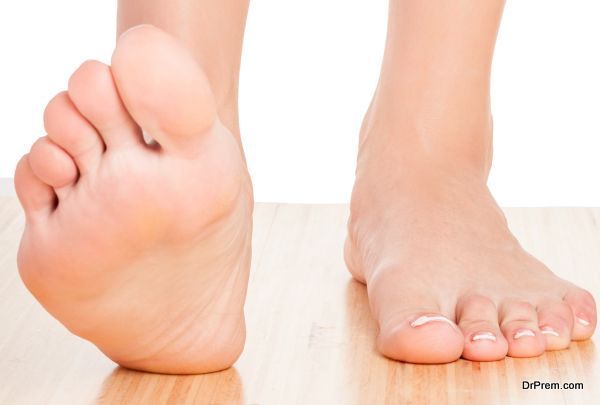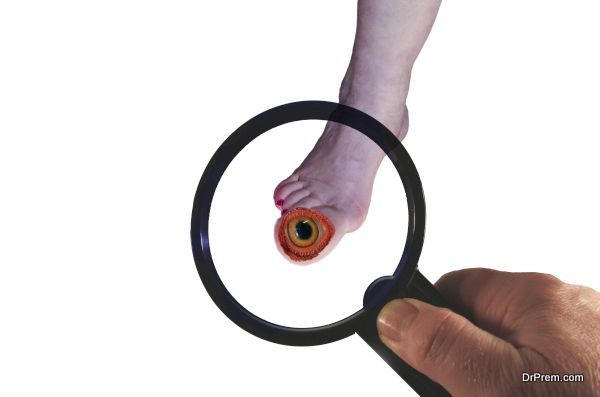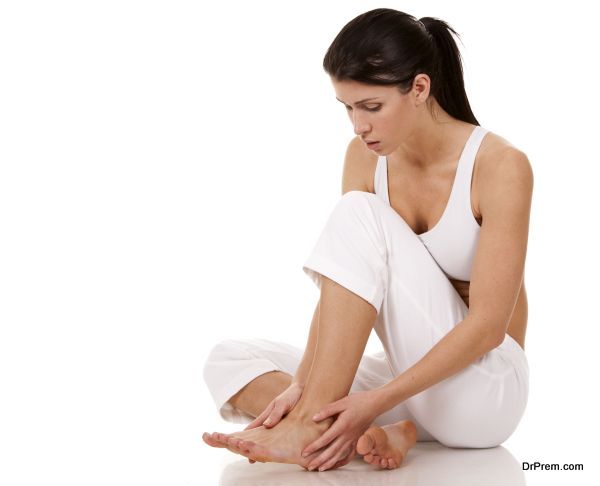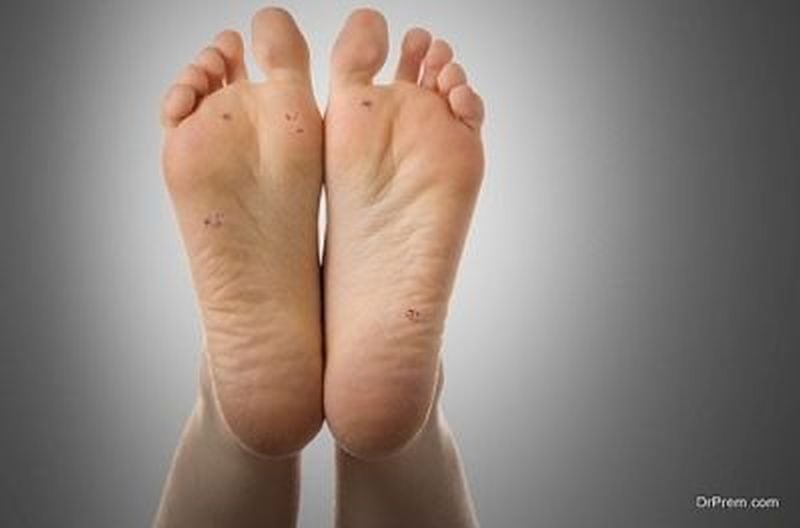Your feet have a pretty important job carrying you through life. And we don’t always take as good of care of our feet as we should. Due to basic wear and tear and other related injuries, we put our feet through a lot. Here are a few of the most common foot related injuries, causes, and treatment options.
Athlete’s Foot

Athlete’s foot doesn’t only affect athletes or gym goers, though individuals in these circumstances are sometimes at higher risk for this fungal disease. Athlete’s foot is a fungus that lives in warm, dark, and moist areas often found between a person’s toes or the bottom of the feet. The easiest way to treat and void athlete’s foot is to keep your feet clean and dry and wearing clean, dry footwear. Those suffering from athlete’s foot will experience an itchy rash that is either red or white in color. The rash is sometimes accompanied by a mild odor. You can treat athlete’s foot with over the counter fungal sprays or a prescription of these methods don’t work.
Gout
Gout is actually a type of arthritis caused by the body’s inability to balance uric acid levels. The buildup of uric acid collects in the joint fluid and joint tissues, most commonly in the big toe. Gout affects the feet because they are the coolest part of the human body and uric acid crystallizes under these conditions. Signs that you’re suffering from gout include redness, swelling, and warmth in the area. The toe will also be tender to the touch. There’s no medical treatment for gout but sufferers can try applying ice to the affected area. Staying hydrated and avoiding triggers such as red meat and seafood can help prevent attacks.
Hammertoes
No, this isn’t a fun new dance. Hammertoes occur when your toes are bent out of shape. This usually happens to the second, third, or fourth toes and are caused by improperly fitting shoes. Hammertoes often require surgery to be fixed. That is so because, over time, your toes can become permanently stuck in the bent position. For temporary relief you can try wearing foot pads or inserts that will help straighten the toes. Don’t be surprised if corns or calluses form due to the toes awkward positioning.
Corns

Corns, as well as calluses, develop on the bony areas of the feet after constant rubbing in tight fitting shoes. Corns can appear on all areas of the feet but are most commonly found on the tops, sides, and between the toes. If they appear on the balls or heels of the foot they’re often known as calluses. Both corns and calluses are actually compacted areas of dead skin that are hard and painful to the touch. For corn and callus removal, you’ll want to consult a podiatrist. If you’re looking for temporary relief, try padding the affected area to offer cushion and support while walking.
Bunions
This is another common condition that affects the big toe joint. When the big toe joint is crooked, it often sticks out at the base of the toe, forcing the toe itself to turn in. Bunions are caused by a variety of things from arthritis to trauma and even genetics. Sometimes, narrow shoes can cause bunions. If you’re suffering from one, try to wear shoes that are wide or loose fitting, as tight shoes can aggravate symptoms. Like hammertoes, most bunions require surgery to be fixed completely though short-term relief can be found in more comfortable shoes and pain relievers.
Plantar Fasciitis
Plantar fasciitis and heel spurs are sometimes confused. Why? Because both cause pain in a person’s heel and often times, patients suffering from plantar fasciitis are also suffering from heel spurs. But, they are two very different conditions. Plantar fasciitis is quite common and occurs when the tissue that connects the heel of the foot to the ball of the foot becomes inflamed. This inflammation can be treated using steroid injections, physical therapy, surgery, and shoe inserts. Heel spurs are often a result of plantar fasciitis and aren’t normally painful.
Flat Feet

Flat feet is exactly what it sounds like. When a person is standing normally, their foot lacks the natural arch in the middle. This condition, also known as fallen arches, can cause a great deal of discomfort and pain during physical activity. The tendons and ligaments that attach a person’s heel and foot work together with the lower leg muscles to form a person’s arches. When they fail to do so, it results in low or no arches. Flat feet are actually quite common in infants and toddlers but can affect adults as well. Fallen arches can cause pain and discomfort in the foot and lower back and are caused by things such as genetics, injury, nervous system diseases, and arthritis. Treatment for flat foot pain include the use of insoles, wide-fitted shoes, and surgery in severe cases.
Take Care of Your Feet
Some common foot conditions are avoidable and easily treatable by choosing the proper shoes and keeping feet clean and dry. Other conditions are brought on by genetics and other afflictions such as arthritis or injury. Treat your feet right and be sure to consult a podiatrist at the first signs of discomfort or pain.
Article Submitted By Community Writer




